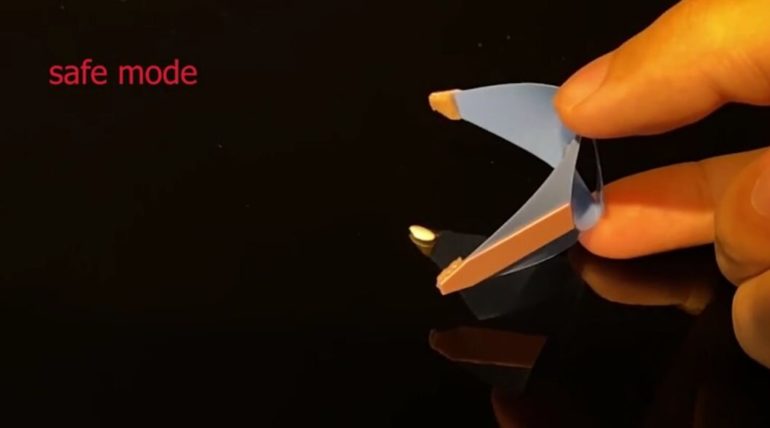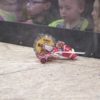New research that employs curved origami structures has dramatic implications in the development of robotics going forward, providing tunable flexibility—the ability to adjust stiffness based on function—that historically has been difficult to achieve using simple design.
“The incorporation of curved origami structures into robotic design provides a remarkable possibility in tunable flexibility, or stiffness, as its complementary concept,” explained Hanqing Jiang, a mechanical engineering professor at Arizona State University. “High flexibility, or low stiffness, is comparable to the soft landing navigated by a cat. Low flexibility, or high stiffness, is similar to executing of a hard jump in a pair of stiff boots,” he said.
Jiang is the lead author of a paper, “In Situ Stiffness Manipulation Using Elegant Curved Origami,” published this week in Science Advances. “Curved Origami can add both strength and cat-like flexibility to robotic actions,” he said.
Jiang also compared employing curved origami to the operational differences between sporty cars sought by drivers who want to feel the rigidity of the road and vehicles desired by those who seek a comfortable ride that alleviates jarring movements. “Similar to switching between a sporty car mode to a comfortable ride mode, these curved origami structures will simultaneously offer a capability to on-demand switch between soft and hard modes depending on how the robots interact with the environment,” he said.
Robotics requires a variety of stiffness modes: high rigidity is necessary for lifting weights; high flexibility is needed for impact absorption, and negative stiffness, or the ability to quickly release stored energy like a spring, is needed for sprint.
Traditionally, the mechanics of accommodating rigidity variances can be bulky with nominal range, whereas curved origami can compactly support an expanded stiffness scale with on-demand flexibility. The structures covered in Jiang and team’s research combine the folding energy at the origami creases with the bending of the panel, tuned by switching among multiple curved creases between two points.
Curved origami enables a single robot to accomplish a variety of movements. A pneumatic, swimming robot developed by the team can accomplish a range of nine different movements, including fast, medium, slow, linear and rotational movements, by simply adjusting which creases are used.
In addition to applications for robotics, the curved origami research principles are also relevant for the design of mechanical metamaterials in the fields of electromagnetics, automobile and aerospace components, and biomedical devices. “The beauty of this work is that the design of curved origami is very similar, just by changing the straight creases to curved creases, and each curved crease corresponds to a particular flexibility,” Jiang said.
An origami-based robotic structure inspired by ladybird wings
More information:
Z. Zhai el al., “In situ stiffness manipulation using elegant curved origami,” Science Advances (2020). advances.sciencemag.org/lookup … .1126/sciadv.abe2000
Provided by
Arizona State University
Citation:
Curved origami provides new range of stiffness-to-flexibility in robots (2020, November 18)
retrieved 21 November 2020
from https://techxplore.com/news/2020-11-origami-range-stiffness-to-flexibility-robots.html
This document is subject to copyright. Apart from any fair dealing for the purpose of private study or research, no
part may be reproduced without the written permission. The content is provided for information purposes only.



